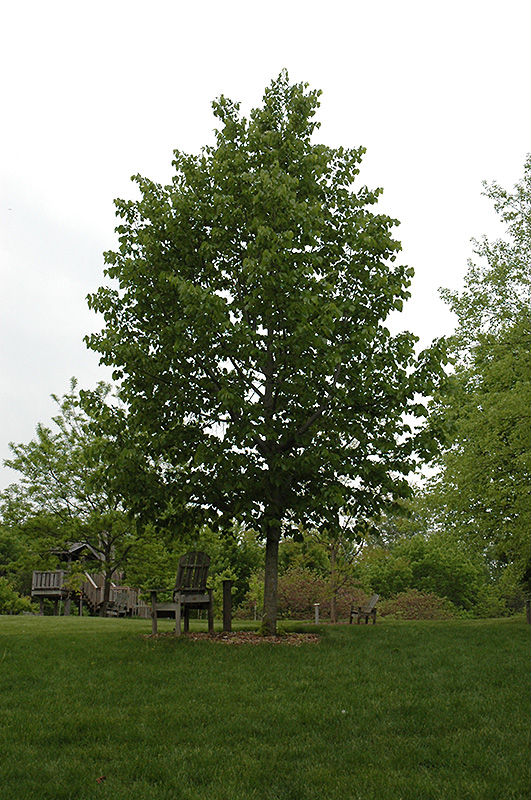>> Home
Frontyard Linden
Tilia americana 'Frontyard'
Height: 60 feet
Spread: 40 feet
Sunlight:
![]()
Hardiness Zone: 3
Other Names: Basswood, American Linden
Description:
A tall, broadly pyramidal tree with a consistent shape and fragrant yellow flowers in early summer, eventually becoming quite tall; very adaptable and low maintenance, an excellent choice for smaller landscapes or for vertical emphasis
Ornamental Features
Frontyard Linden is primarily valued in the landscape for its distinctively pyramidal habit of growth. It features subtle clusters of fragrant buttery yellow flowers with tan bracts hanging below the branches in early summer. It has dark green deciduous foliage. The large heart-shaped leaves turn an outstanding yellow in the fall.
Landscape Attributes
Frontyard Linden is a dense deciduous tree with a strong central leader and a distinctive and refined pyramidal form. Its relatively coarse texture can be used to stand it apart from other landscape plants with finer foliage.
This is a relatively low maintenance tree, and is best pruned in late winter once the threat of extreme cold has passed. It is a good choice for attracting bees to your yard. Gardeners should be aware of the following characteristic(s) that may warrant special consideration;
- Insects
Frontyard Linden is recommended for the following landscape applications;
- Shade
- Vertical Accent
Planting & Growing
Frontyard Linden will grow to be about 60 feet tall at maturity, with a spread of 40 feet. It has a high canopy with a typical clearance of 7 feet from the ground, and should not be planted underneath power lines. As it matures, the lower branches of this tree can be strategically removed to create a high enough canopy to support unobstructed human traffic underneath. It grows at a medium rate, and under ideal conditions can be expected to live for 70 years or more.
This tree should only be grown in full sunlight. It is very adaptable to both dry and moist locations, and should do just fine under average home landscape conditions. It is not particular as to soil type or pH. It is somewhat tolerant of urban pollution. This is a selection of a native North American species.
